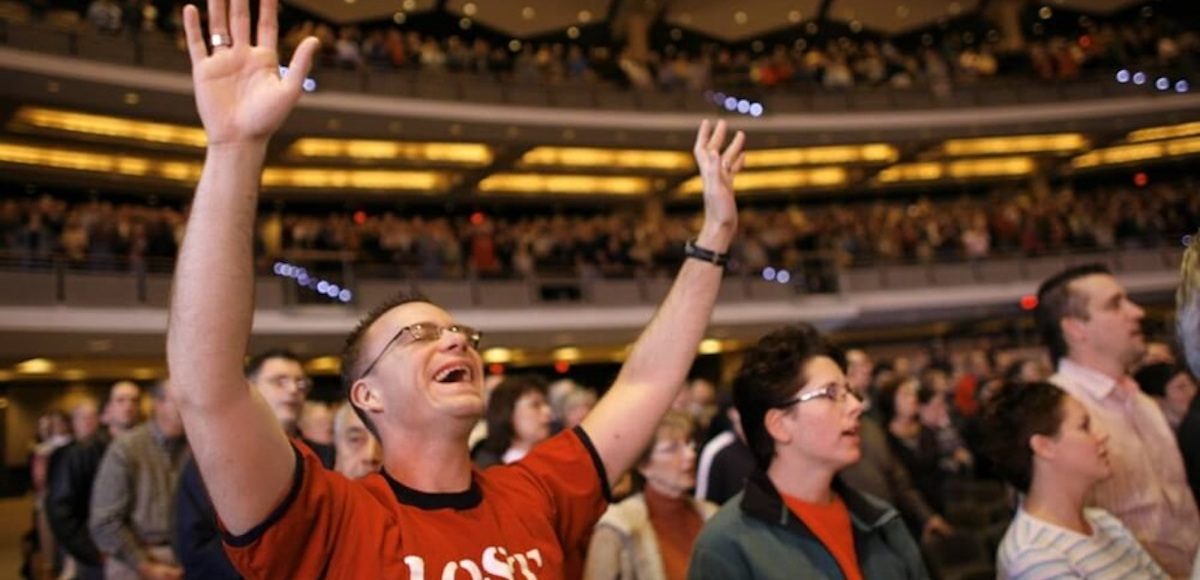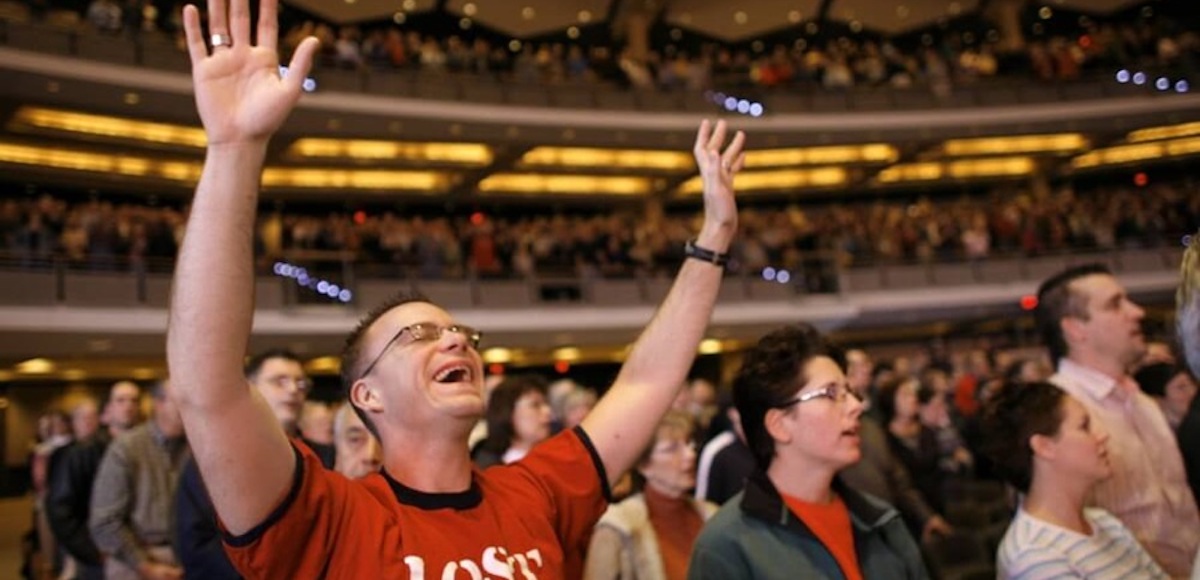

Worshippers fill the 7,000-seat Willow Creek Community church during a Sunday service in South Barrington, Illinois. (Photo: Reuters)
A recent study from Vanderbilt University finds those who attend services at a church, synagogue or mosque are markedly less stressed and live longer. The study found middle-aged adults–those ages 40 to 65, both men and women–who worship reduce their risk for mortality by 55%.
“Sometimes in health science we tend to look at those things that are always negative and say, ‘Don’t do this. Don’t do that,'” said Marino Bruce, a social and behavioral scientist and associate director of the Center for Research on Men’s Health at Vanderbilt. “Our findings support the overall hypothesis that increased religiosity – as determined by attendance at worship services – is associated with less stress and enhanced longevity.”
Mr. Bruce, a research associate professor of medicine, health and society at Vanderbilt, said the findings should be “encouraging individuals to participate in something.” Also a Baptist minister, he is the main author of the study along with Keith Norris, professor of medicine at the David Geffen School of Medicine at UCLA.
There are nine other co-authors of the study, which was published May 16 in PLOS ONE. It used publicly available data from the National Health and Nutrition Examination Survey (NHANES) collected by the Centers for Disease Control and Prevention’sNational Center for Health Statistics.
The researchers analyzed 5,449 subjects of all races and sexes, with 64% attending worship services. They observed the mortality and allostatic load, the latter being a physiological measurement of “factors including cardiovascular (blood pressure, cholesterol-high density lipoprotein ration and homocysteine), nutritional/inflammatory (albumin, C-reactive protein) and metabolic (waist-hip ratio, glycated hemoglobin) measures.”
The higher the allostatic load, the more stressed an individual was deemed.
Non-worshipers had a significantly higher overall allostatic load score and “higher prevalence of high-risk values for three of the 10 markers of allostatic load than did church-goers and other worshipers.”
Worth noting, the effects of attendance at worship services remained even after other factors were observed, including education, poverty, health insurance and social support status.
“We found that they go to church for factors beyond social support,” Mr. Bruce said. “That’s where we begin to think about this idea … of compassionate thinking, that we’re … trying to improve the lives of others as well as being connected to a body larger than ourselves.”
The study did not address the effects of frequency of worship.
Pundit’s Perspective
The results of the study strongly support the argument made by PPD’s editor in Our Virtuous Republic, introduced in “The Psychology of Virtue.” Baris notes how “over 200 epidemiological and clinical studies have documented the influence of religious affiliation on physical and mental well-being.”







